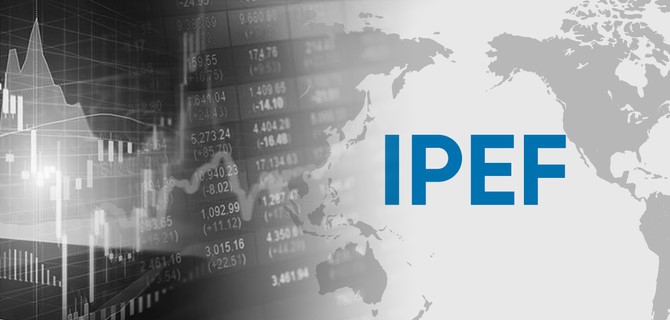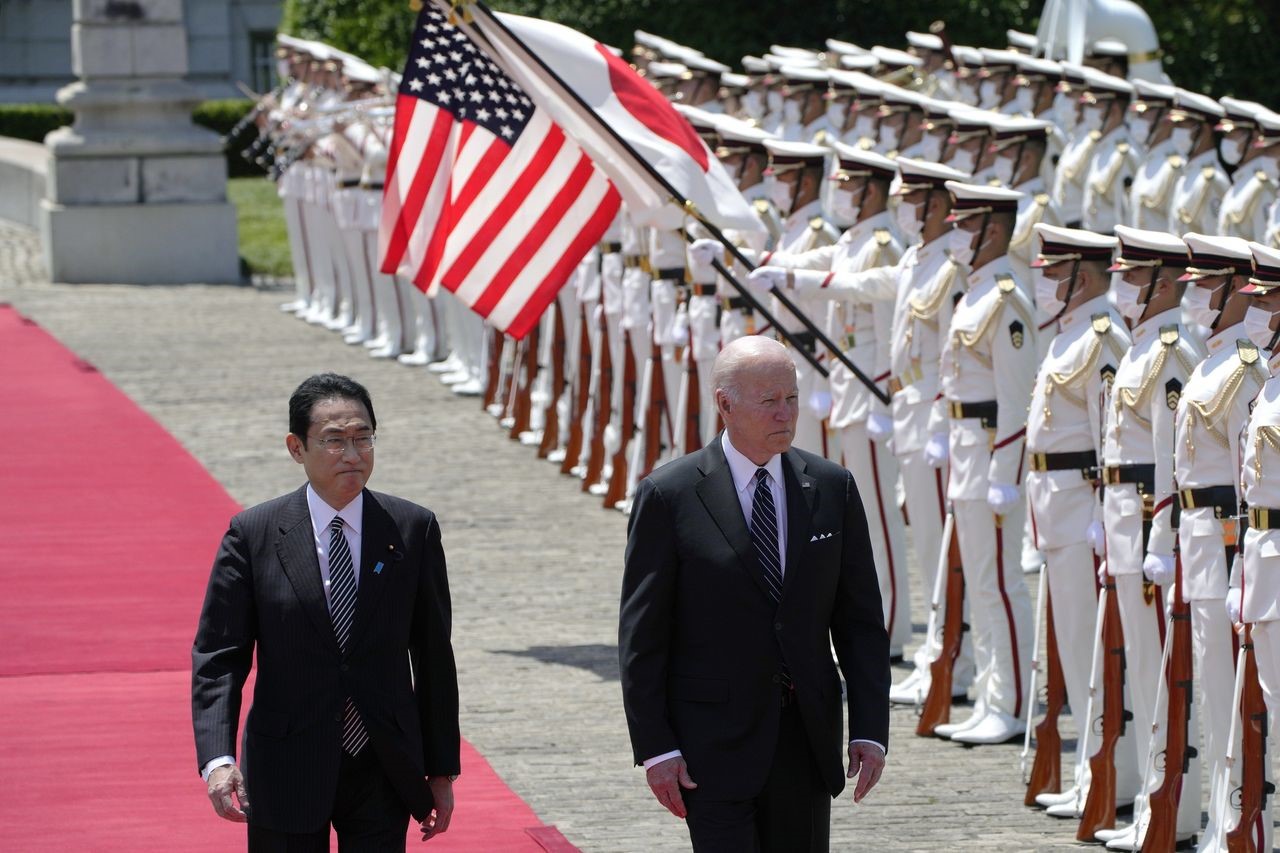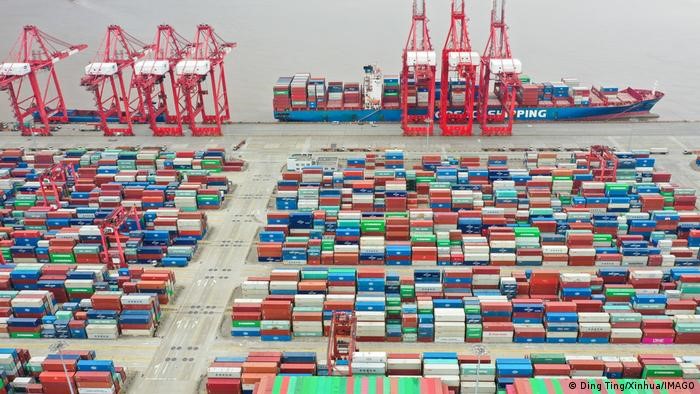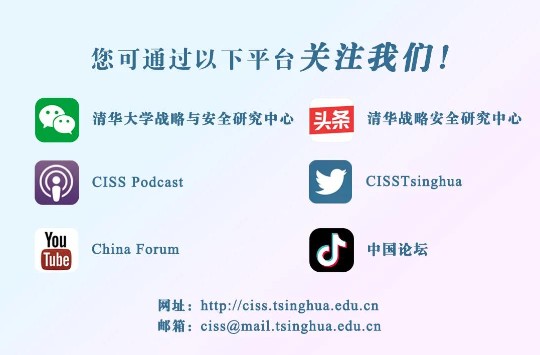美国总统拜登于5月23号宣布启动“印太经济框架”(IPEF),目前包括亚太地区的14个国家。然而,因IPEF排除亚太地区最大的经济体——中国,同时缺乏实质性的经济措施,既不是一个自由贸易协定,也不是经济共同体,从而自宣布以来就饱受质疑和批评。

(图片来源:pulsenews )
一、美国故意将区域内最大经济体中国排除在“印太经济框架”之外。“印太经济框架”表面是为加强区域合作、促进地区开放繁荣,实则是拉帮结伙搞“小圈子”,破坏产业链稳定,制造地缘对抗,危害自由贸易,对亚洲不是“福音”。
The United States has been trumpeting that its Indo-Pacific Economic Framework (IPEF) will bring prosperity to the region. But its sole purpose is to advance the Indo-Pacific Strategy and key interests of the US instead of driving post-pandemic recovery, development and prosperity of the region.
Asian countries need to brace themselves for the negative impact brought on by the framework which could be summed up as "four Ds": Division, deprivation, deviation and disappointment.
First, IPEF is created to encourage regional economies to "decouple" from the Chinese market by leading them to alternative supply chains, a step that Washington believes will help exclude China from the regional trading and supply systems.
This would essentially install a closed, exclusive and confrontational arrangement within this region designed with clear geopolitical and ideological intentions, which runs counter to the principles of multilateralism.
The US Trade Representative Katherine Tai has openly described the IPEF as an “arrangement independent of China”. Given China’s economic size and influence in the region and the possible consequences of artificially splitting the trading system and cutting off supply chains, such an arrangement would not be conducive to the unity and regional economic integration of the Asia-Pacific.
There are speculations that as far as Asean countries are concerned, the US is trying to recruit Indonesia, Malaysia, Singapore and Vietnam to join IPEF, while leaving out Cambodia, Laos, Myanmar and Brunei, which will undoubtedly affect the development of the ASEAN community and undermine the unity of Asean.
(May 27, 2022, Jakarta Post, Indo-Pacific Economic Framework not a blessing for Asia)
Chinese State Councilor and Foreign Minister Wang Yi also criticized the United States for creating the Indo-Pacific Strategy to form small cliques in the name of freedom and openness, noting its purpose is to contain China.
Wang said the framework attempted to erase the name "Asia-Pacific" and the effective regional cooperation architecture in the region when he and visiting Pakistani Foreign Minister Bilawal Bhutto Zardari jointly met the press after their talks on Sunday.
"Facts will prove that the so-called Indo-Pacific Strategy is in essence a strategy that creates divisions, incites confrontation and undermines peace. No matter how the strategy is airbrushed or disguised, it is bound to be a failed strategy," he said.
On Sunday, protesters took to the streets in central Tokyo against the Indo-Pacific strategy including Quad, denouncing the movement towards division and not harmony, and brinkmanship leading to confrontation instead of regional solidarity for the good of the region.
(May 23, 2022, Xinhua, U.S. new Indo-Pacific economic framework faces headwinds)

(图片来源:wsj )
二、抛开其地缘政治上的“排他性”问题,“印太经济框架”依然饱受质疑,因为它并不是一个贸易协定,不包含关税降低等实惠性措施,所以对当事国家和企业的吸引力不大,也不太可能在该地区造成从中国到美国的实质性贸易转移。
Ahead of the IPEF launch, Beijing criticized the U.S. effort, with Chinese Foreign Minister Wang Yi saying the strategy is “doomed to fail.”
The biggest criticism of the IPEF is its lack of tariff reduction or other provisions leading to opening access to the U.S. market — making it less attractive in a region that has existing regional free trade agreements such as the Comprehensive and Progressive Agreement for Trans-Pacific Partnership (CPTPP) and the Regional Comprehensive Economic Partnership (RCEP).
“You’re right — it is not a traditional free trade agreement,” Sullivan told VOA. “And that’s a good thing. It is a modern negotiation designed to deal with modern challenges.”
(May 23, 2022, VOA News, Biden Launches Indo-Pacific Economic Framework)
Except for India and the U.S., all other nations participating in the IPEF are part of the China-centric rival trade bloc, RCEP. Though the Asian countries are common signatories to both the economic frameworks, IPEF (to which India has signed) cannot turn out to be a substitute for RCEP. The goal of the IPEF is seemingly similar to RCEP — to increase economic engagement between the participating countries — United States and the Asian countries involved — both from a rules and trade volume perspective. But IPEF is not any kind of free trade agreement. The primary avenue for boosting trade volumes between the participating countries has historically been to eliminate tariff and non-tariff barriers – a crucial component lacking in IPEF.
Unlike traditional trade blocs, IPEF members won’t negotiate tariffs or ease market access. Without these ‘carrots’, experts are skeptical of the success of IPEF.
During a Senate Finance Committee hearing in March, US Senator Mike Crapo said “IPEF may be a positive first step to engagement in Asia, but it is no substitute for comprehensive trade agreements.” Trade negotiations on four pillars among 13 countries, with jurisdiction spanning across multiple U.S. government agencies (USTR, US Department of Commerce), may be complicated. The US Trade Representative (USTR) will lead the negotiations on the trade pillar, while the US Commerce Department will oversee negotiations on the remaining three pillars of the proposed agreement.
Without including market access – the elimination of tariffs and non-tariff barriers – IPEF is unlikely to boost trade flows between the United States and the other 13 participating Asia/Pacific nations.
(June 6, 2022, The Geopolitics, The Indo-Pacific Economic Framework — A framework Sans ‘Carrots’)
Aside from these modest benefits, the IPEF’s trade pillar is unlikely to affect trade flows in a meaningful way. Some of the most prohibitive barriers to trade in this region are in tariffs and lack of market access (e.g., non-tariff barriers such as quotas or trade-distorting regulations). Tai has made clear that market access is not on the table.
According to a Center for Strategic and International Studies report summarizing interviews with Indo-Pacific governments, “no country consulted saw any potential incentives that would make up for the lack of a market access component to the IPEF.” This sentiment raises the question: What do participants really have to gain from the IPEF? Without meaningful trade policy changes that incentivize increased trade among IPEF countries, the administration cannot hope to significantly increase the U.S.’s economic influence in the region or counter China’s. What’s more, the IPEF will surely increase engagement between U.S. government officials and those of IPEF countries. It is, however, uncertain if that engagement will result in participants adopting U.S.-like economic policies, especially in the areas of labor and the environment.
The Indo-Pacific Economic Framework is not a free trade agreement; rather, it is an executive branch initiative to negotiate standards and rules in the region. The goal of the IPEF is ostensibly to exert U.S. influence over economic standards in the Indo-Pacific region as a counterweight to China. Without including market access – the elimination of tariffs and non-tariff barriers – the framework is unlikely to affect trade flows between the United States and the other 13 participants. It is therefore unlikely to create substantial trade diversion inthe region from China to the United States. The best way to achieve these goals is through a comprehensive trade agreement that removes tariff and non-tariff barriers to trade, and one that is negotiated in full consultation with Congress and passed into law.
(Jun 2, 2022, American Action Forum, Success Unlikely in Indo-Pacific Economic Framework Without New Market Access)

(图片来源:dw)
三、“印太经济框架”不是个需要国会通过的贸易协定,因此面临更换总统就更改条约的风险。许多国家开始对美国的协商诚意产生怀疑。实质上拜登政府是在要求参加国做出美国已经做出的承诺,而美国不会做出更多承诺。
The Biden administration has indicated IPEF will not be submitted to Congress for approval, as is done with traditional FTAs given Article I, Section 8 of the Constitution grants Congress purview over international trade.
Instead, IPEF will be implemented in whole or in part through Executive Order.
This will allow the Biden administration to freely negotiate IPEF terms and outcomes but suggests outcomes will not contain any obligations that require congressional action. Without Congress codifying new laws to support IPEF obligations, the U.S. will largely be unable to offer potential partners any new commitments beyond existing U.S. law. In essence, the administration will be asking potential partners to commit to doing what the U.S. is already doing, but not offering partners new or additional U.S. commitments.
Negotiations on IPEF are ambitiously proposed to take 18-24 months.
This timeline recognizes the U.S. presidential election at the end of 2024 and seeks to finalize and implement the framework before then to avoid a new administration withdrawing the U.S. from IPEF, as was the fate of TPP. Still, a new administration in 2024 or after could withdraw the U.S. from IPEF given the framework will largely be implemented through Executive Order, which, as compared to a traditional FTA that is ratified by Congress and codified in law, can be easily overturned.
(Jun 1, 2022, China Briefing, The Indo-Pacific Economic Framework (IPEF) is Not a Free Trade Agreement, but Will Be Judged on the Same Principles)
The durability of the IPEF is also in doubt. Were Mr Trump to return to the Oval Office in 2024, he would not need three days to ditch the framework.
The Biden administration has tried to make a virtue of these limits. Rather than conceiving of the IPEF as a conventional deal, it has declared that the pact will rest on four pillars, with trade promotion just one. The other three goals are to make supply chains more resilient; to promote infrastructure investment and clean energy; and to form new rules on taxation and anti-corruption. It is tempting to dismiss such a wide-ranging agenda as too vague to amount to anything. But paradoxically, a near-stumble at the launch of the framework illustrated that it could, in theory, have force to its contents: America had to tone down the language in its founding documents, otherwise some in Asia would have balked at signing them.
(Aug 18, 2019,The Economist, America’s new Asian economic pact: just don’t call it a trade deal)
四、“印太经济框架”之所以不包含美国向参加国开放更大市场和增加投资等实惠性款项,是因为拜登政府担心遭到国内批评,想籍此为美国经济捞好处并赢得选票。如果拜登政府连国内都掌控不了,还如何指望在国际上发挥领导作用?
As an attempt to counter Beijing’s influence, the IPEF falls laughably short of what’s needed. Countries in the Indo-Pacific want two things: access to bigger markets and infrastructure investment. Chinese Foreign Minister Wang Yi, addressing the United Nations Economic and Social Commission for Asia and the Pacific shortly after the IPEF was launched, pointed out that China was already providing both, by signing up to the Regional Comprehensive Economic Partnership free-trade pact and investing in its Belt and Road Initiative. That, he said meaningfully, was “practical action.”
This is the second missed opportunity in just a few weeks for the US in the region. Earlier this month, Biden hosted the leaders of the Association of Southeast Asian Nations in Washington for a special summit. The White House proudly announced “$150 million in new initiatives” for ASEAN, which princely sum would be just about enough to build 1.6 kilometers of the new (Japanese-funded) Jakarta subway. ASEAN’s leaders know that the Biden administration’s efforts are nowhere near enough: Malaysia’s prime minister said in Washington that “the US should adopt a more active trade and investment agenda with ASEAN, which will benefit the US economically and strategically.”
But more market access, in particular, appears to be off the table for the US. The Biden administration’s fear that any movement on trade could lead to political attacks at home from left and right is palpable. Even the official announcement of the IPEF began by describing it as “rules of the road that ensure American workers, small businesses and ranchers can compete in the Indo-Pacific.” The framework, it pledged, would “protect us against costly disruptions that lead to higher prices for consumers.”
For the countries of the Indo-Pacific, this is a wake-up call. The US economy is booming, with unemployment in much of the country hitting record lows. Almost three-fourths of Democrats think that trade is an opportunity, not a threat. If an administration that prides itself on its outreach to strategically important partners is still too scared to increase their access to US markets, then why would any country imagine that closer relations with the US are important to its future? If, under such circumstances, US leaders can’t show leadership at home, it is presumably futile to expect the country to lead abroad.
(May 25, 2022, Bloomberg, The US Can’t Beat China If It’s Scared of Trade)
编辑: 李泽西 审核:许馨匀、张立荣

